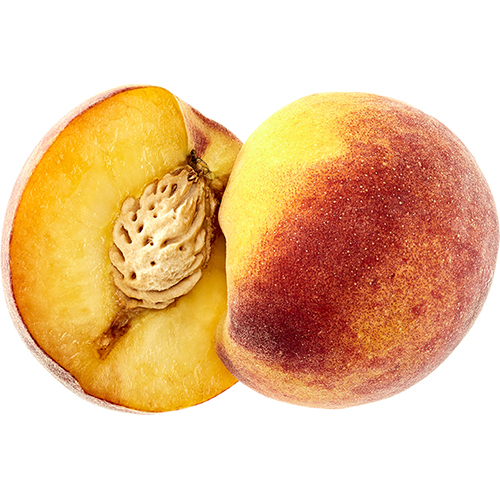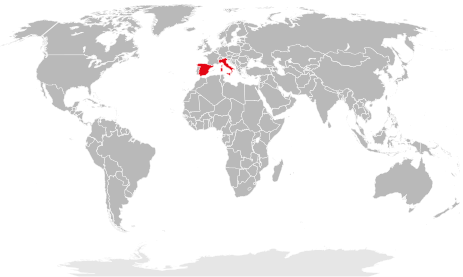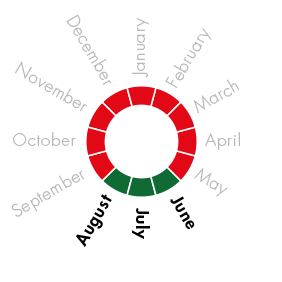Peach




Succulent and sweet
Easy to digest
Contains vitamins in the groups A, B, C, E and K
A yellow-skinned peach contains c. ¼ of the daily requirement of beta-carotene
Succulent and sweet
Easy to digest
Contains vitamins in the groups A, B, C, E and K
A yellow-skinned peach contains c. ¼ of the daily requirement of beta-carotene
Origin
Italy
Spain

Harvest time

Fillings



Information
Peaches, the most popular stone fruit, are closely related to apricots, nectarines and almonds, and therefore also belong to the rose family (Rosaceae). The peach does not originate from Persia, as its Latin name (Prunus persica) might suggest, but from Northern and Central China, where it has been cultivated for more than 6000 years. It then made its way to Europe via Persia and Asia Minor. In Germany, however, we have to thank the Romans for brining peaches across the Alps all the way to the Rhine.
A peach can always be recognised by: furrows down the length of the fruit, a sunken stem base and, in particular, its light, velvety, downy hairiness. Just as peaches can vary in colour on the outside – from greenish yellow, yellow-orange to red – the colour of the flesh is also different depending on the variety. Ranging from white to yellow, it can also be – albeit less commonly – red.
The main producers today are China, Italy, the USA, Greece, Spain, France, Turkey, Chile, Argentina, South Africa and Australia – all countries with a warm-temperate climate.
A peach can always be recognised by: furrows down the length of the fruit, a sunken stem base and, in particular, its light, velvety, downy hairiness. Just as peaches can vary in colour on the outside – from greenish yellow, yellow-orange to red – the colour of the flesh is also different depending on the variety. Ranging from white to yellow, it can also be – albeit less commonly – red.
The main producers today are China, Italy, the USA, Greece, Spain, France, Turkey, Chile, Argentina, South Africa and Australia – all countries with a warm-temperate climate.
Good to know
- Give juices and smoothies a smooth/viscous feeling in the mouth
- When processed, the fruit forms a fine purée
- A fruit low in acid, particularly suitable for ‘mild’ (low acid) juices
- Particularly good as a fruit snack
- Very flavourful in cakes, desserts, ice cream and breads
Quality
- Bio
- Conventional
